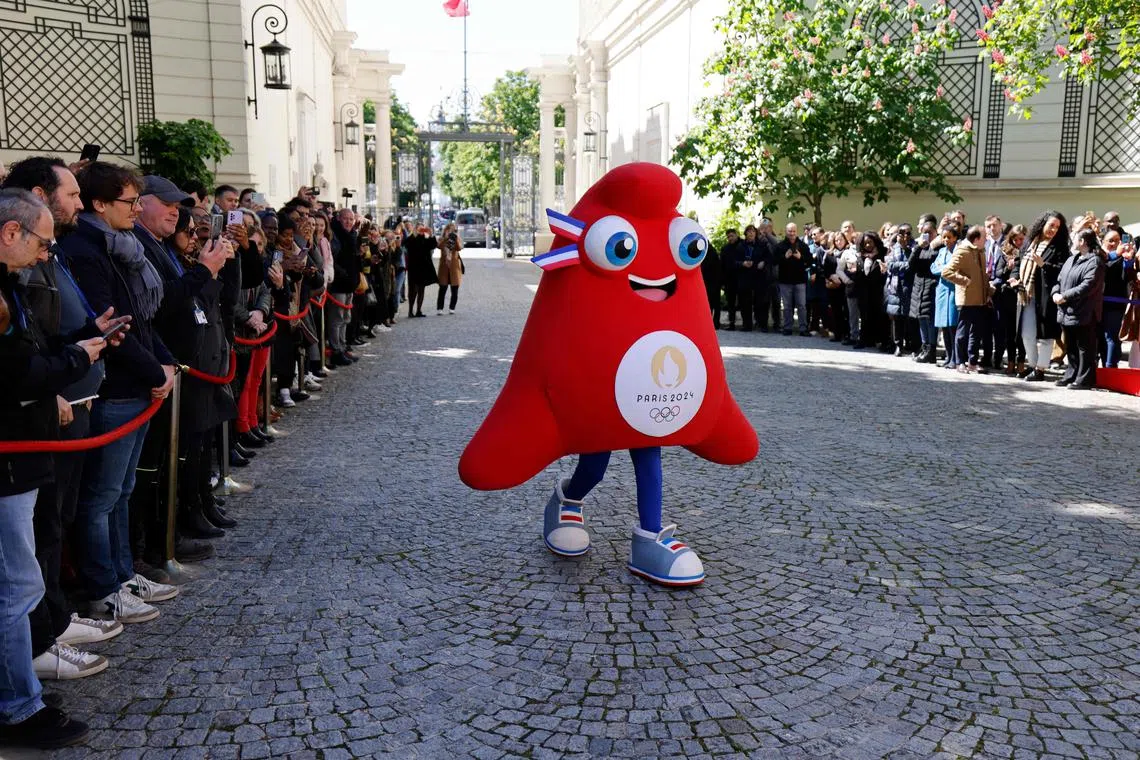Paris Olympics: What you need to know about the unique opening ceremony
It is expected to be a show like no other but it is also a major security challenge
PARIS will begin its Olympics extravaganza with an unprecedented opening ceremony on the river Seine on Friday (Jul 26). Here is what you need to know about the ceremony:
What will we see?
The organisers have promised a show like no other, for unlike previous Olympics, the Paris 2024 opening ceremony will not take place in a stadium. Instead, dozens of boats will carry thousands of athletes and performers on a six-kilometre route along the Seine. Departing from the Austerlitz bridge, the parade will sail by Notre-Dame de Paris cathedral and arrive near the Eiffel Tower, after passing under bridges and gateways, including the Pont des Arts and Pont Neuf, and near many of the French capital’s landmarks.
Organisers have said that they will take advantage of the historic monuments, riverbanks, and even the sky and water, with every riverbank or bridge filled with music, dance and performances. The show will have 12 parts, some of which will play on cliches about France.
Athletes and artists will take part in the parade together. “Everything will be woven together, including the protocol (the speeches, the opening by the head of state, the anthems, etc),” organisers Thomas Jolly et Damien Gabriac told Le Monde newspaper.
The ceremony is due to start at 7.30 pm (Saturday 1.30 am, Singapore time) and last about four hours. Organisers said that it would reach a climax at around 9.35 pm when the sun sets.
Who will be there?
The show will be attended by over 100 heads of state and government and over 300,000 spectators will watch from the river’s banks, organisers informed, adding that there will be some 80 giant screens along the way. The Paris 2024 committee said that there would be about 10,500 athletes and some 222,000 people will get free invites, while about 104,000 will have to buy a ticket.
Boats carrying the athletes will be equipped with cameras to allow those watching on TV or their phone to get a close-up view, the committee said. There have been training sessions, and boats will be stored in a warehouse for a week before the opening ceremony for security reasons.
What about security?
Organising the ceremony in the heart of an iconic city like Paris may make for great pictures, but it is also a major security challenge. Some 45,000 police will be dispatched to ensure the ceremony’s security, including special intervention forces. Snipers will be deployed on the top of buildings along the route. An anti-drone system will be in place.
Spectators and local residents alike will need to carry permits on a QR code to get anywhere near the riverbanks from Jul 18. Cars will not be allowed into the area, with few exceptions. Nearby metro stations will be closed, as will many of the bridges. No planes will be allowed to fly over Paris unless they are part of the ceremony. With wars in Gaza and Ukraine, and security concerns at home, France already has its security alert at its highest level.
Officials have said there were no specific terror threats to the opening ceremony. But should specific concerns arise, there are backup plans, that would either see the ceremony limited to the Trocadero square near the Eiffel tower, or the Stade de France stadium.
The main potential risk would be from a lone attacker, officials have said over the past months, while also flagging potential petty crime and possible protests, from environmental activists, the far right and far left, the pro-Palestinian movement or others.
A man was arrested in May in Saint-Etienne, suspected of planning an attack in the name of Islamic State at the city’s football stadium during the Olympics. A right-wing sympathiser was arrested in eastern France in July on suspicion of plotting attacks to take place during the Olympics.

What were previous Summer Olympics’ opening ceremonies like?
Tokyo 2020: The Tokyo Games were actually held in 2021, a year later than scheduled, due to the Covid-19 pandemic. As a result, the opening ceremony was overshadowed by health and safety concerns, and the Games were held largely without spectators.
Rio 2016: A financially constrained Brazil had little choice but to put on a more low-key show, with minimal technology and a heavy dependence on the country’s vast talent and its Carnival party traditions.
London 2012: The 86-year-old Queen Elizabeth put aside royal reserve in a video where she appeared alongside James Bond actor Daniel Craig at Buckingham Palace. Later, a stunt double for the Queen – who wore a gown, wig and handbag – stepped onto a helicopter with Craig and they both jumped off and parachuted their way into the London Stadium. It was part of a dizzying ceremony designed to highlight the grandeur and eccentricities of the nation.
Beijing 2008: About one billion people, or 15 per cent of the world’s population, watched the opening ceremony, which involved 10,000 performers, 2008 drummers and a dramatic sky-walking finale.
Decoding Asia newsletter: your guide to navigating Asia in a new global order. Delivered to your inbox. Free.
Copyright SPH Media. All rights reserved.




